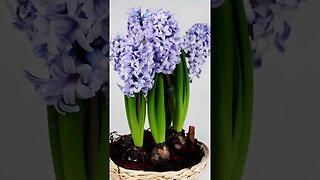CHILI PEPPERS: Add Spice and Color to Your Garden
Chili Peppers: Add Spice and Color to Your Garden.
Chili peppers are a popular garden addition for their fiery flavor and vibrant colors. These versatile plants offer both culinary and ornamental value, making them an exciting choice for gardeners seeking to add a touch of heat and visual interest to their outdoor spaces. In this content, we will explore the characteristics of chili peppers, including their appearance, growing zones, planting, care, and maintenance.
Colors and Appearance of Peppers.
Chili peppers come in a vast range of colors, including shades of red, orange, yellow, green, purple, and even white. The fruits vary in size and shape, ranging from small, round peppers to long, slender varieties. Chili pepper plants typically have green leaves and white flowers, with the fruits often ripening to their final color as they mature. Depending on the variety, chili pepper plants can grow anywhere from 1 to 6 feet (30 cm to 1.8 meters) tall.
Growing Zones and Environmental Conditions
Chili peppers (Capsicum annuum) are native to Central and South America and thrive in moderately warm to hotter USDA plant hardiness zones. However, they can also be grown as annuals in colder climates. Check with your local ag extension office to see which varieties would work best for your region.
These plants prefer well-draining soil with a pH level of 6 to 6.8. Chili peppers require full sun, with at least 6 hours of direct sunlight daily, for optimal growth and fruit production.
Chili peppers are self-pollinating but can also attract insects, such as bees and butterflies, due to their fragrant flowers and vivid fruit colors.
Latin Names of Some Favorite Chili Peppers.
The Capsicum genus includes several species and countless cultivars of chili peppers, with some popular varieties being:
Capsicum annuum 'Jalapeno' (Jalapeno Pepper),
Capsicum annuum 'Cayenne' (Cayenne Pepper),
Capsicum chinense 'Habanero' (Habanero Pepper),
Capsicum chinense 'Carolina Reaper' (Carolina Reaper Pepper).
When to Plant Chili Peppers.
The best time to plant chili peppers is in the spring after the danger of frost has passed and the soil has warmed to at least 60 degrees Fahrenheit.
Planting, Care, and Maintenance.
Start chili pepper seeds indoors 6 to 8 weeks before your last expected frost date. Transplant seedlings outdoors when nighttime temperatures consistently remain above 55 degrees.
Prepare the planting site by loosening the soil to a depth of 12 inches (30 cm) and incorporating compost or other organic matter to improve drainage and fertility.
Space plants 18 to 24 inches (45-60 cm) apart to ensure adequate air circulation and room for growth.
Water regularly throughout the growing season, maintaining consistent moisture while avoiding overwatering. Chili peppers prefer evenly moist but not waterlogged soil.
Apply a layer of mulch around the plants to help conserve moisture, suppress weeds, and regulate soil temperature.
Fertilize chili peppers with a balanced, slow-release fertilizer when transplanting, and switch to a low-nitrogen, high-potassium fertilizer once fruit production begins.
Prune chili pepper plants to encourage bushier growth and increased fruit production. Remove any diseased or damaged plant material as needed.
Harvest chili peppers when they have reached their mature color and desired heat level. The longer peppers remain on the plant, the spicier they become.
Chili peppers are an exciting and flavorful addition to any garden, offering various culinary and ornamental uses. Following the planting and care guidelines outlined above, you can enjoy a bountiful harvest of colorful, spicy peppers to use in your favorite dishes or add visual interest to your garden. These versatile plants provide heat and flavor. These beauties are a must-have for gardeners seeking to create a diverse and dynamic outdoor space.
Connect with us:
Facebook: https://www.facebook.com/TayloesLawnCare
Web: https://www.tayloeslawncare.com
MeWe: https://mewe.com/p/diyhomegarden
Image and music licensed via Canva Pro
-
 0:51
0:51
Garden Revelations
8 months agoHYACINTH: A breathtaking early spring bulb flower to plant in the fall for early spring pollinators
99 -

TENET Media
1 hour agoWinston Marshall Tricks Nancy Pelosi to Humiliate Herself | Dave Rubin & Isabel Brown
6.95K5 -
 LIVE
LIVE
IrishBreakdown
1 hour agoNotre Dame Recruiting Hour: Gordy Sulfsted Commits, DL Recruiting Talk
872 watching -
 LIVE
LIVE
OFFICIAL Jovan Hutton Pulitzer Rumble
1 hour agoLooking Back On Lockdowns and Disruptions In Our Supply Chain and Lives
727 watching -
 LIVE
LIVE
Major League Fishing
4 days agoLIVE Bass Pro Tour, Heavy Hitters, Day 3
539 watching -
 LIVE
LIVE
The Shannon Joy Show
7 hours ago🔥LIVE W/Sasha Latypova! Commissioned By Pentagon-COVID Was An Inside Job & The Shots Are Bioweapons
723 watching -
 LIVE
LIVE
The Charlie Kirk Show
2 hours agoWhy the Vax is Back + Debate Prep + Cohen Robs Trump | Davis, Hassam-Nahoum, MacArthur | LIVE
9,897 watching -
 1:20:38
1:20:38
vivafrei
2 hours agoMichael Cohen STOLE from Trump! Liberal Gaslighters! Butker's Graduation Speech & MORE!
4.01K15 -
 1:02:22
1:02:22
The Dan Bongino Show
4 hours agoThe Dem's Secret Plot To Dump Biden (Ep. 2253) - 05/20/2024
284K938 -
 1:22:01
1:22:01
Benny Johnson
3 hours agoIT'S OVER: Trump Trial BOMBSHELL, Star Witness Admits He STOLE From Trump! Iran's President DEAD 🚨
27.9K64